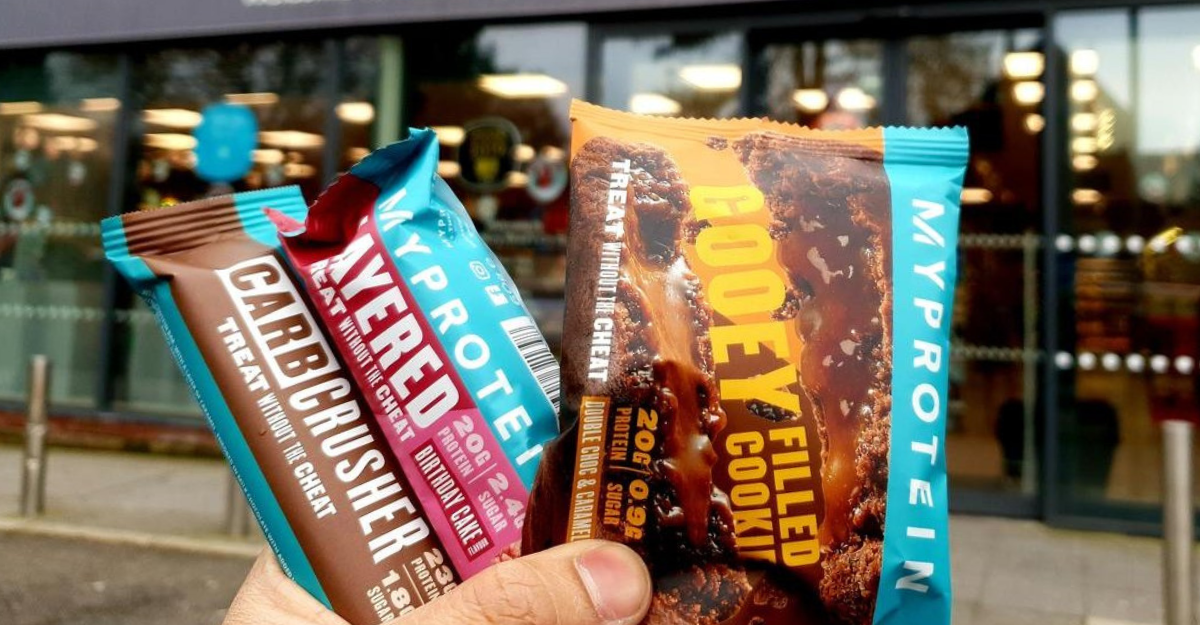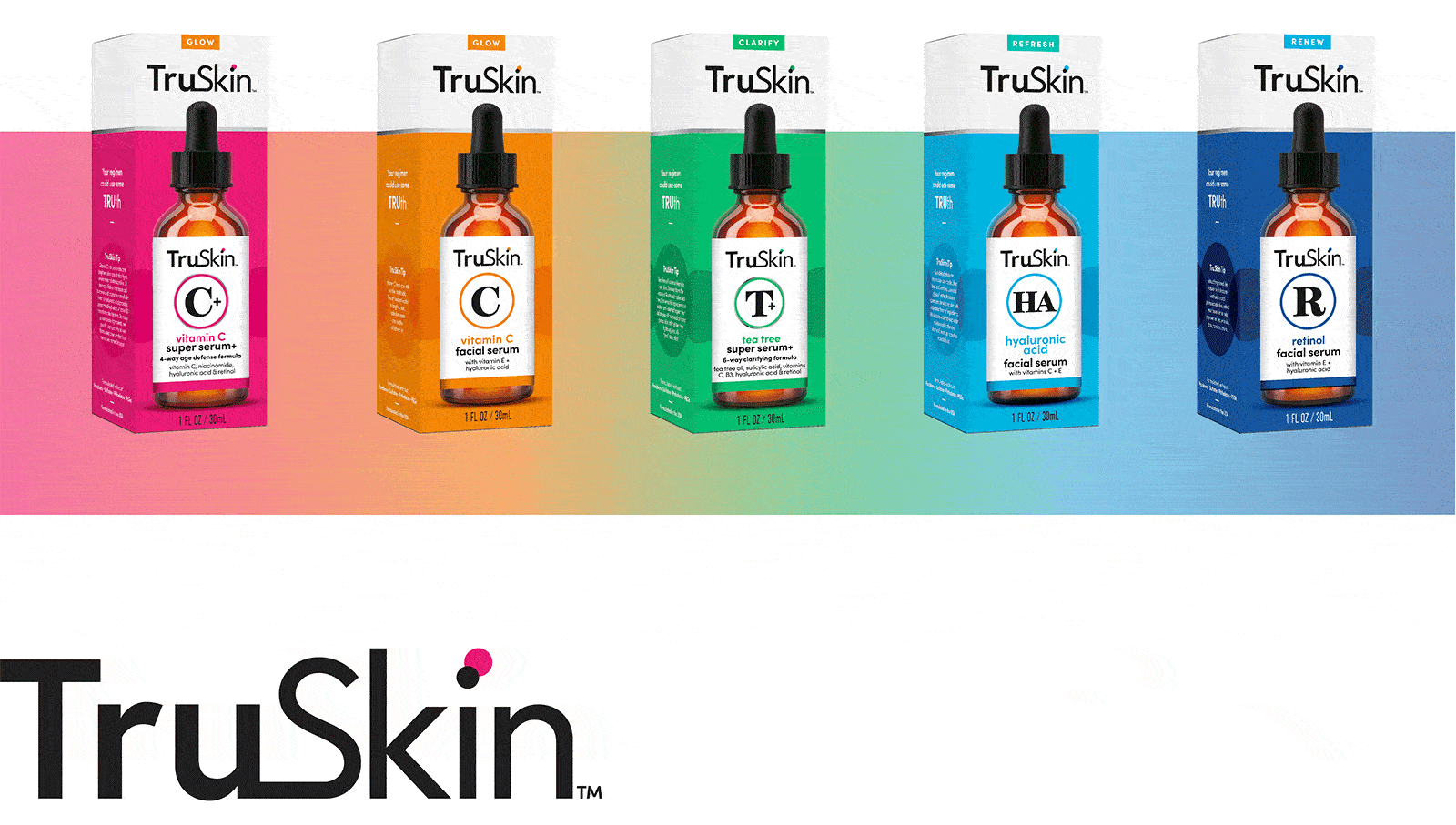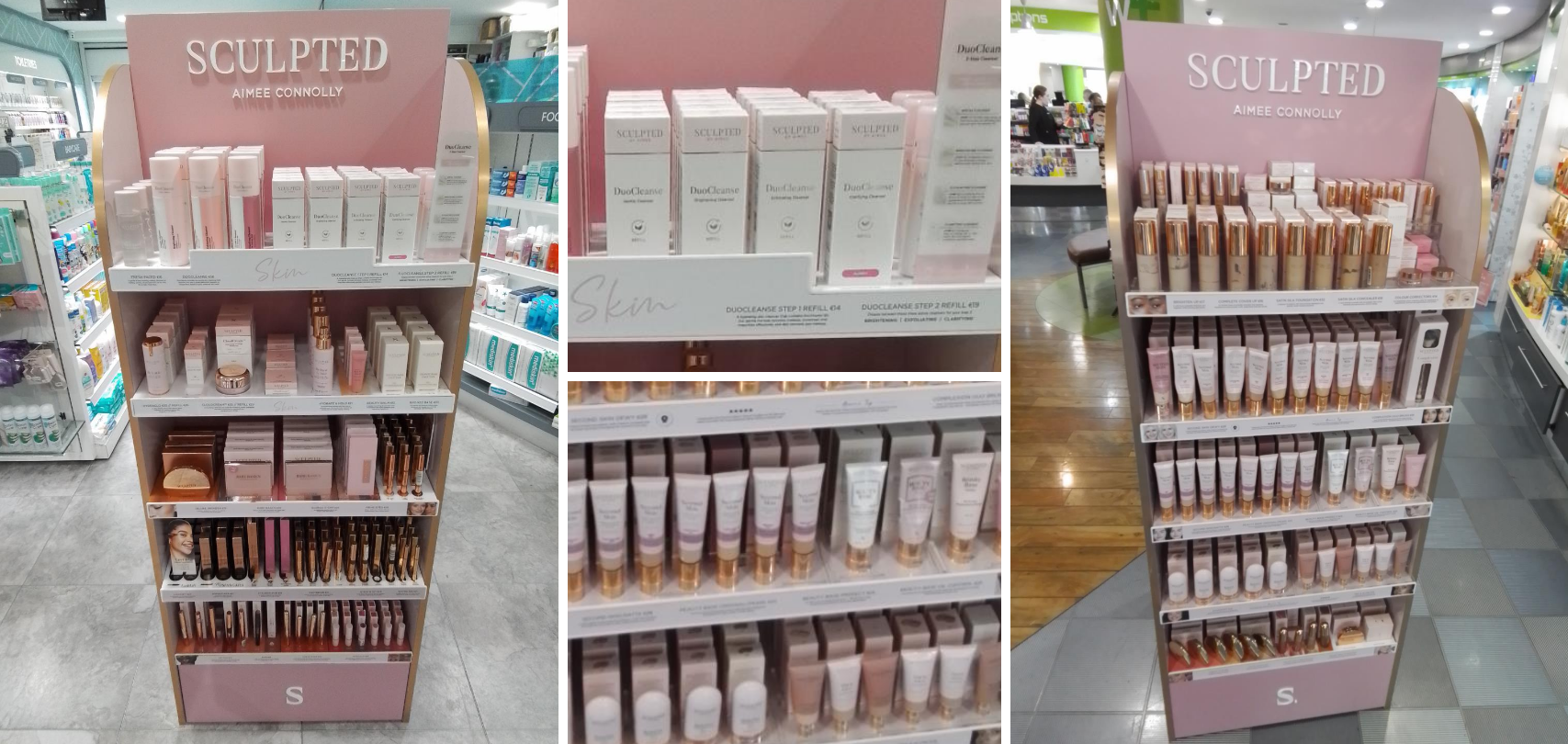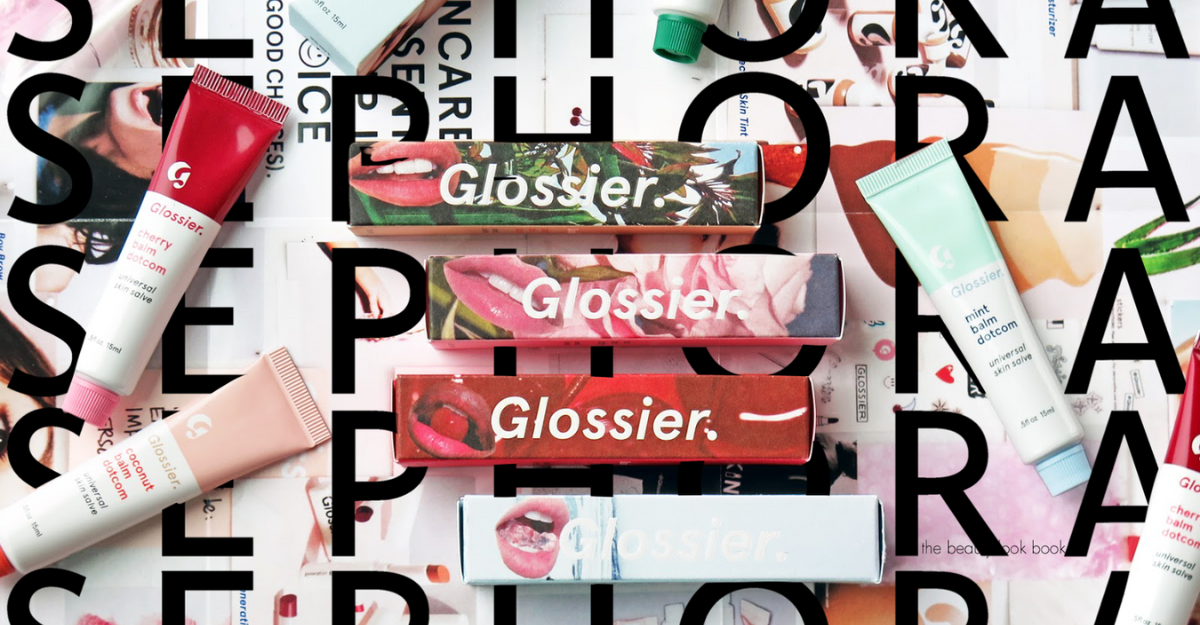
July 24, 2024
In Blogs

While many Health & Wellness brands can thrive using the direct-to-consumer (DTC) channel alone, branching into bricks and mortar can be a game-changing move. Brands across all Health & Wellness sub-categories can elevate brand awareness, engage untapped consumer groups, and reach a much larger audience by expanding into retail. Even hugely successful DTC brands achieve substantial growth upon stepping into bricks and mortar.
Yet this is no simple shift to make. The strategies that have brought you success in ecommerce will not necessarily work in the traditional retail environment. It requires a new approach, considering everything from your target consumer groups and retailers to your brand packaging design and marketing strategies.
With almost 30 years of experience and expertise, Ceuta Group, an IQVIA business, knows what it takes to develop and execute a winning Health & Wellness DTC to bricks and mortar transition strategy. Dive into this guide for the ten essential steps to success.
“Expanding your brand into bricks and mortar requires a new approach, considering everything from your target consumer groups and retailers to your brand packaging design and marketing strategies.”Expanding a brand into bricks and mortar requires a substantial investment. Therefore, it’s important to consider your brand objectives and how transitioning into retail will help you achieve them. This will help you identify priorities and focus your investment on the right areas.
83% of consumers surveyed have said no one in their household uses a regular DTC service.¹ By securing listings in a popular bricks and mortar store, you will likely raise greater awareness of your brand and attract more loyal customers. Furthermore, if your products are suitable, stocking your brand in pharmacies can drive sales and credibility, especially when endorsed with the pharmacist’s recommendation.
Transitioning into bricks and mortar can also improve accessibility for your existing customers, thereby promoting customer loyalty.
For example, they may not want to keep buying online. Getting your brand into the retailers they frequent can prevent your customers from buying a competitor’s product over yours because it is more convenient to do so. It can also prompt customers to include your products in their weekly or bi-weekly shopping journeys, hence increasing value per customer.
Another initial decision you need to make is whether to open your own stores or sell your brand in existing retailers. The former option requires a much larger investment, but it will enable you to create a unique, immersive shopper experience, where consumers can live and breathe the brand.
In the self-care and beauty space, Rituals, Lush, and Aesop all have a particular look and feel, with staff that know the brand inside and out, the heritage fragrance, and the opportunity for consumers to try the products. If you do not want to invest in launching your own brand concept stores, but would like to provide an elevated experience for shoppers, retailers like Boots are increasingly offering pop-up stands with brand ambassadors. This is a fantastic alternative that can give your brand a great deal of exposure, enabling shoppers to try your products, converse with the brand ambassador, and get to know your brand more than they could if it were sitting on the shelf.
Some brands do both. In 2023, Myprotein, the “World’s Number 1 Online Sports Nutrition Brand” launched its first concept store and café in the UK², enabling customers to try various Myprotein products and dishes made with it*. In the same year, they also signed deals with major grocers and retailers to stock their brand in over 1,000 stores across the UK³, facilitating greater accessibility and awareness among consumer groups.

photo from Myprotein blog*
Likewise, Sculpted by Aimee, the award-winning Irish make-up brand, started as a DTC-only brand and expanded to an omnichannel presence before opening dedicated brand stores in Ireland. In November 2023, Sculpted by Aimee launched a new two-floor flagship store on Carnaby Street in London, building a powerful brand presence in the UK, having become a best-seller in Ireland.
“The stronger your understanding of your target market, the greater chance you will have of developing a powerful bricks and mortar brand strategy and a strong connection with new and existing customers.”The stronger your understanding of your target market, the greater chance you will have of developing a powerful bricks and mortar brand strategy and a strong connection with new and existing customers. Therefore, thorough market research is a must. Your insights will support you at every stage of your bricks and mortar execution journey, from brand design to lead and customer communication to distribution and eventually, scaling up.
Assessing the attractiveness and awareness of your brand among bricks and mortar shoppers is equally fundamental to ensure your brand is viable for expansion into bricks and mortar. For example, if you were a very new or niche brand, there may be very few shoppers who are aware of and understand your brand concept and the benefits your products can bring them. This initial research piece will support you in determining whether there is enough demand for your brand in the market you plan to launch in.
Considering your bricks and mortar customer is essential for targeting the right global markets, locations within those markets, and retail channels. You should take into account all the consumer groups you want to engage, their preferences, shopping behaviour, and priorities when making purchase decisions.
To identify your target consumers, go back to your bricks and mortar ambitions. If your main objective is to extend your reach to consumer groups that don’t tend to shop online, you will need to determine who those consumers are and where they shop. Identifying their purchase decision hierarchies will also be invaluable to your brand positioning strategy.
For example, it could be that your ecommerce business hits younger consumer groups well, but it’s missing the mark with the 50+ market, which your brand could appeal to if you made it available and prominent to them. In this case, you should shape your retail strategy around the shopping behaviours and preferences of the particular consumer groups you want to attract and partner with the retailers they frequent.
On the other hand, your main goal of transitioning your brand into bricks and mortar could be to improve accessibility for your existing customer base and grow your reach amongst the same or very similar consumer groups. In this case, you may already have a strong amount of customer profile data gathered from your ecommerce business. You can also fortify this with customer surveys and build brand membership schemes to collect more comprehensive data from your customers.
You should know where and how your customers shop both online and in physical retail stores. You should know their preferences when it comes to your products, price range, their spend per purchase, and how often they repurchase. You should also generally know what age they are, their values and priorities when it comes to Health & Wellness, the areas they shop in, and what times they tend to shop. If you want to target a mix of existing customers and untapped consumer groups, you should tailor your strategies to those segments accordingly.
“Think commercially and strategically about the retail channels that align with your brand, brand values, and customer base.”Think commercially and strategically about the retail channels that align with your brand, brand values, and customer base. Ultimately, you need to make your brand available where your target consumers are. They may, for example, often visit their local pharmacist for advice but make their purchases in a store like Boots, a health food store, or even a grocer, due to the larger range of products available, the deals and lower prices, or loyalty schemes and discounts.
Likewise, if you are considering opening brand stores and you want to launch one close to home, but your target consumers live and shop on the other side of the country or globe, you will need to re-strategise accordingly.
Depending on your budget and ambition, how well-known your brand is already among consumers, and how widely spread your customer base is, you may plan to take a more mass approach rather than choosing one retailer or one region at a time. MyProtein, for example, has built an international DTC customer base over 15 years with over 8 million unique customers globally, and when the brand owner saw through their online audience a shift in consumer behaviour and a growing demand for their products in easily accessible, on-the-go formats, they targeted mass retailers in the UK with new retail-appropriate products4.
“You will need to prove to retailers that your brand will bring a meaningful difference to the category, appeal to the store’s existing customers, and drive category growth.”To successfully expand your Health & Wellness brand into bricks and mortar stores, you should have a category vision. Identify the categories you see your products fitting into and the shopper requirements that your brand can fill. You will need to prove to retailers that your brand will bring a meaningful difference to the category, appeal to the store’s existing customers, and drive category growth.
Most of the time, DTC brands will enter an existing retail category, but depending on your product, you may need to create a new category. This presents a greater challenge, as retailers will require a lot more convincing. You will need to explain the brand concept, the consumer need for it, and why making space for its unique category will be worth their investment.
Once you have proven your brand’s potential with clear commercial insight tailored to their store, you can secure a great deal and drive incredible success with that retailer. Cooper Consumer Health’s Eroxon, for example, is the first sexual health product of its kind, offering an erectile dysfunction gel, which, unlike the other products in its closest retail category, does not contain drugs or have to be taken orally and can, therefore, be bought over-the-counter rather than exclusively in pharmacies. As a result, once the brand successfully convinced Boots buyers of its appeal with a cross-channel promotional strategy and support from Ceuta Group, it won prominent product placement on the shop floor of UK’s most popular health and beauty retail stores. The expert launch strategy and phenomenal sales during the launch phase also won the brand multiple industry awards and headlines in major news media.
Regardless of whether you are entering an existing category or creating a new one, you will need to use as much of your insights as possible to show retailers the size of the opportunity, how strong your brand is among DTC consumers, and how advantageous it can be for their store.
As a DTC-only brand, you may have put great effort into your digital assets and delivery materials. Yet, up until now, your product packaging and labelling might not have had to work as hard, because they were supported with rich digital content. As you move into bricks and mortar, they become essential. Your packaging and labelling serve as your brand’s first impression to shoppers and retail buyers and need to be self-sufficient in driving the decision at the point of purchase. The key brand claims and product information, unique selling points, and benefits must now be displayed on the product label or packaging as you won’t have a webpage there to support them. You need to find the right balance, ensuring effective consumer education without overwhelming consumers with information and causing confusion. Your products must also look attractive and stand out on the shelf.
When the popular US DTC skincare brand TruSkin expanded into bricks and mortar, they enlisted Ceuta Group’s brand design experts to transform their brand strategy, design, communications, and products to repeat their digital success in retail. They reinvigorated the packaging and labelling of their product range to catch shoppers’ attention with bright and bold messaging, highlighting the health-enhancing properties and natural ingredients, reinforcing TruSkin’s authentic skincare narrative, and promoting the brand’s USPs.

It may be necessary to develop shelf trays for your products. This is mainly for brands that have been ordering their products in huge master cartons. They may come from your factories loose inside the box. However, many retailers prefer brands to present and pack their products in shelf-ready trays. As each retailer approaches their displays differently, you will need to tailor your shelf tray to each retailer’s specified dimensions. You may also need to shrink-wrap them or provide supporting material according to the retailer’s requirements, for example, point of sale (POS) units or in-store signposting.
Determine a pricing strategy that aligns with your brand’s positioning, ensuring to balance good value for the consumer with maintaining a healthy profit margin both for your brand and the retailer. Take into account all the profits and losses, complexities, regulatory, compliance, and logistics required for each retail channel and market.
You also need to ensure you have the funds to make your bricks and mortar transition viable, including any upfront investment needed with the retailer to account for the shopper awareness activation material inside and outside the store.
For DTC brands that have a much higher price point than brands in retail stores, it will take more strategising. However, provided you have the customer scale and insights to prove to the retailer that shoppers will be happy to pay that higher price point for it, you can create new segments within the store’s existing categories.
For example, the premium DTC hair care brand, CurlyCo, has performed exceptionally well online with salon-quality products, which will be perhaps three or four times the price of the mass haircare category average when it moves into retail. Because of the creative ingredients and superior quality the brand offers, CurlyCo meets a need that its mass market competitors don’t cater for, thus encouraging retailers to assign it space for its own category segment.
“Many DTC brands adapt their product range to maximise appeal for the bricks and mortar consumer.”Many DTC brands adapt their product range to maximise appeal for the bricks and mortar consumer. This ranges from providing alternative sizing in line with the category norms, price points, and consumer requirements to developing a new product line for varying shopper scenarios. You may even design a collection of products to sell exclusively at one retailer.
For brands that specialise in personalisation, you will need to consider how you can adapt your customer experience and personalisation journey for bricks and mortar. Your products will now need to be pre-packaged rather than arriving already personalised on your customer’s doorstep. You may choose to warm shoppers to your concept with a starter case or individual components that they can pick and match in the store as they would on your website.
As an example, Sculpted by Aimee offers a larger collection of foundation shades and a more personalised experience online, taking customers through a “Shade Finder” quiz. In the retail channel, they dedicate their shelf space to a selection of their most popular shades but use POS materials to call out the wider range on their website, ensuring the customer always finds the best choice, not just chooses from what’s available.

While transitioning into bricks and mortar, it’s essential to maintain a strong online presence to avoid losing existing customers who prefer to shop online. Your ecommerce platform can continue to serve as an avenue for sales, consumer awareness, education and engagement, and brand storytelling.
Developing a seamless omnichannel strategy is essential. Your brand should look and feel the same at every touchpoint, with consistent values, messaging, and tone of voice. 56% of shoppers use their smartphones to research items while in stores5*, and the omnichannel experience you provide for them needs to be seamless enough to instil and maintain their confidence in your brand and build customer loyalty.
Importantly, you will need to split your budget now going forward to support sufficient investment for both the bricks and mortar channel and your DTC business.
You should consider how to adapt your communication strategy to cater for both bricks and mortar and DTC shoppers. You will need to develop a variety of cross-channel customer communication and marketing materials now that you are omnichannel, with different strategies for each channel, consumer group, and shopping journey.
You may already put a lot of emphasis on your ecommerce site, with A-B testing and data-driven decisions on which colours, imagery, and messaging to use at which stage of the shopper journey, from their first engagement with your brand on Google or social media to the moment they make a purchase and return later to your site to order something else or even sign up for a regular subscription.
Likewise, with bricks and mortar, there are myriad ways you can navigate shoppers through their journey in the retail environment — they just take different forms. Depending on which consumer group you are targeting, you may invest in television commercials, PR, billboards and print media, or you may use bus shelter adverts and posters in tubes and train stations to catch on-the-go consumers.
You will likely also need substantial in-store signposting, at least during the launch phase, varying between window displays, free-standing display units (FSDUs), POS units, and security cladding. You should also consider the promotional options on your retailer’s digital channels, including adverts, emails, and push notifications.
Many brands going from DTC to bricks and mortar also develop pre-launch below-the-line (BTL) and above-the-line (ATL) campaigns to build awareness and excitement among shoppers and incite them to visit your target retail channels asking for your brand. This can give you more leverage during your brand sell-in.
Ahead of its respective launches into Sephora and Space NK, the unicorn beauty brand, Glossier, built a captive customer base and raised huge consumer awareness through social media. The hype created through its tight-knit community feel on social platforms and wide-scale PR campaigns ensured that both launches were met by an enthused consumer reception and an incredible boost in sales. Within six months of the Glossier-Sephora partnership’s debut year, Glossier was predicted to have made almost $100 million in sales, contributing to a 73% year-over-year brand growth5.

photo from Jerk Magazine*
Think of your negotiations with retailers more as collaborations than transactions. Retailers work best with companies that bring insight, understand their objectives, and work with them to bring benefits to the store as well as the brand.
This begins with considering the category as a whole. Where possible, use data and insights to demonstrate the gap in that category and the potential growth your brand can bring to it. Perhaps you can leverage your scale in ecommerce and show that you’re already a big player in this category, you just haven’t been available before.
If you don’t have the data to accompany that statement, perhaps show the retailer the volume of products that you’re selling, the number of customers you have, and how they align with the retailer’s customers. You may even have data to show that a significant proportion of your DTC customer base already shops in that store.
Support for the retailer doesn’t just come in the form of insights. A large part of it involves collaborating on a product merchandising strategy that will enhance the shopper experience while driving sales for the brand and benefitting the whole category. Consider the amount of shelf space and fixture design you require, and don’t be afraid to innovate to maximise impact and boost margins for both parties. You may choose to use some of your space for additional consumer education material, particularly if your products are outside of the category norm or have a concept that shoppers are not familiar with.
Going forward, it’s essential to maintain a strong relationship with your retail partners, so communicate regularly with your contacts at the retail stores, seek feedback, and address any concerns promptly. Also, provide detailing for retail staff to ensure they are knowledgeable about your products and can assist customers effectively.
Ideation workshops can be invaluable in strengthening your partnership with the retailer, increasing productivity and maximising impact for both parties. For example, when Sanofi launched their new hayfever product, Allevia, Ceuta Group designed a bespoke ideation session for the Sanofi and Boots teams, which enabled them to collaborate in a unique environment. The session step-changed Boots and Sanofi’s relationship, facilitating collaboration and maximising effectiveness going forward. The unique ideation session also facilitated a collaborative launch plan buy-in, resulting in the development of an unprecedented over-sized Allevia tree-shaped FSDU, which drove sales and unlocked growth for the allergy category.
Ceuta’s services don’t stop at arranging ideation sessions like these. Our omnichannel sales and marketing execution experts can represent your brand and sell-in your products to your target retailers on your behalf. Along with the positive reputation that brands receive among retailers from working with Ceuta Group, our clients benefit from our 25 years’ worth of expertise in brand sell-in, placement, positioning, and retail launch strategies.
Setting up a robust distribution and logistics strategy is paramount. You’ll need to ensure that your products can be safely and efficiently delivered to the retail locations you’ve selected in the quantities they require. The challenge grows tenfold when distributing on a global scale, as you will require a distribution partner that can represent your brand as knowledgeably and as passionately as you can, whilst having an intricate understanding of the local market.
These distributors are far and few between and exceptionally difficult to find. That’s why Ceuta Group has established the Ceuta International Alliance, a network of trusted, contracted distributors, which we have been working with for over fifteen years, and some for nearly twenty. Thanks to our International Alliance and our dedicated UK execution team, we can offer omnichannel sales, marketing, and distribution capabilities to brands like yours in the UK and over 100 international markets.
Transitioning your Health & Wellness brand from a digital DTC model to a bricks and mortar presence in the UK and across the globe requires careful planning, market analysis, and a customer-centric approach.
Remember that this transition is not only about a change in sales channels but also about creating a seamless omnichannel brand experience and connecting with consumers across every touch point. By conducting thorough market research, carefully selecting retail partners, optimising your product presentation, and maintaining a strong online presence, you can successfully expand into bricks and mortar.
If you would like support in any or all of these areas, Ceuta Group is happy to help. As the world’s only end-to-end outsourcing solution for Health & Wellness brands, we can accelerate your brand’s success in the retail environment and also help you manage and expand your business online, from market assessments to brand strategy development, sustainable design creation, and global omnichannel sales and marketing execution.
To find out more about how to unlock the true potential of your brand, get in touch.
Learn More